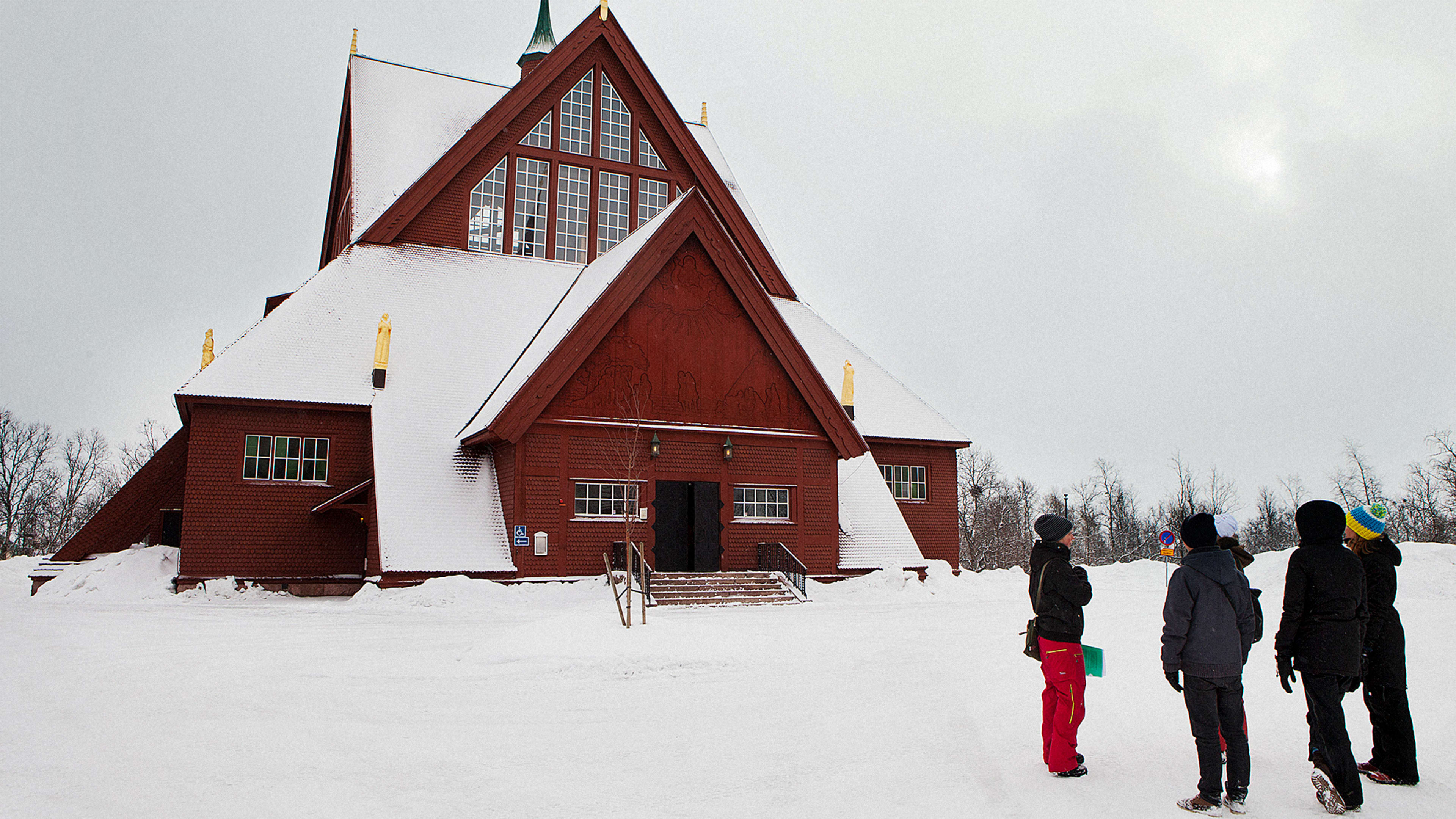In a way, Kiruna’s is a familiar story: The same industry that sustained the town is now occasioning its collapse.
Usually, the damage is more subtle. A coal-fired plant that employs people in a small town might leak enough toxins into the air over time to damage the health of local residents. On an oil rig that sustains the economy of a coastal city might leak harmful chemicals into the water supply.
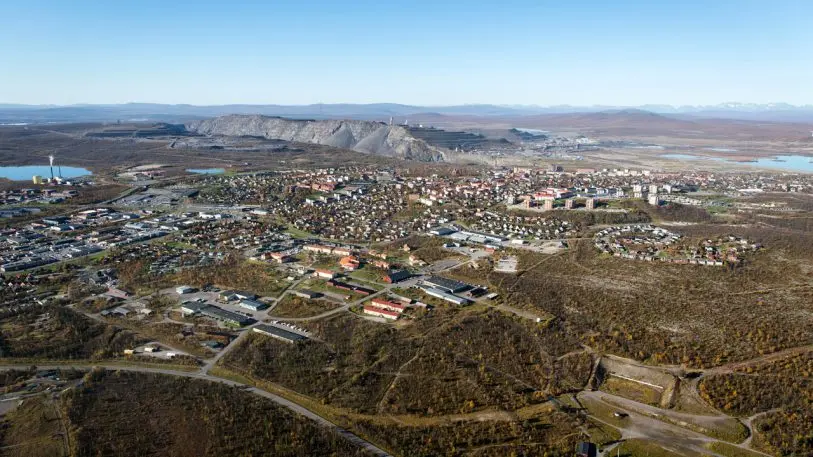
But the example of Kiruna, a city of 18,000 people above the arctic circle, is a much more literal one. A century-old mine next to the town that used to sustain Kiruna’s local economy is now swallowing up the city. As miners have dug as deep as one mile below the ground to extract iron ore, they’ve disrupted the foundation of the city. Underneath some of Kiruna’s central structures, like the church, the ground has cracked and shifted and begun to pull the buildings down with it. Researchers estimate that by the end of this century, the city of Kiruna will collapse entirely into the mine.
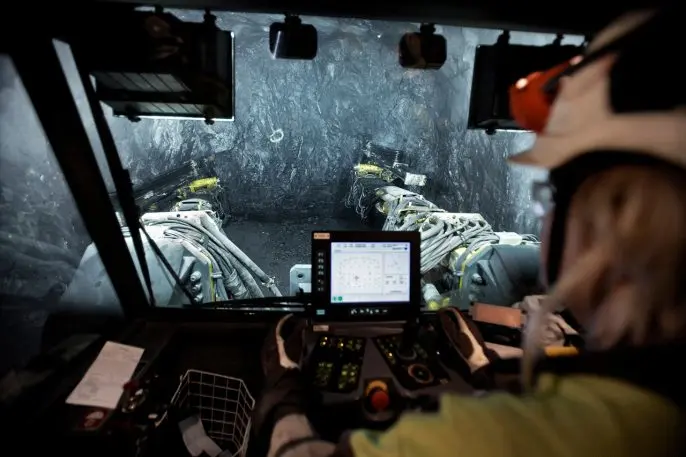
In 2004, Luossavaara-Kiirunavaara Aktiebolag (LKAB), the company that operates the mine, struck up a deal with the city of Kiruna. They would pledge around $1 billion for the town to physically relocate into a valley two miles away, and LKAB would continue mining the same site. The move, which is now officially underway, is one of the highest-profile urban relocation efforts to date, and is expected to be completed by 2040, with the center-most part of the town re-established by 2022.
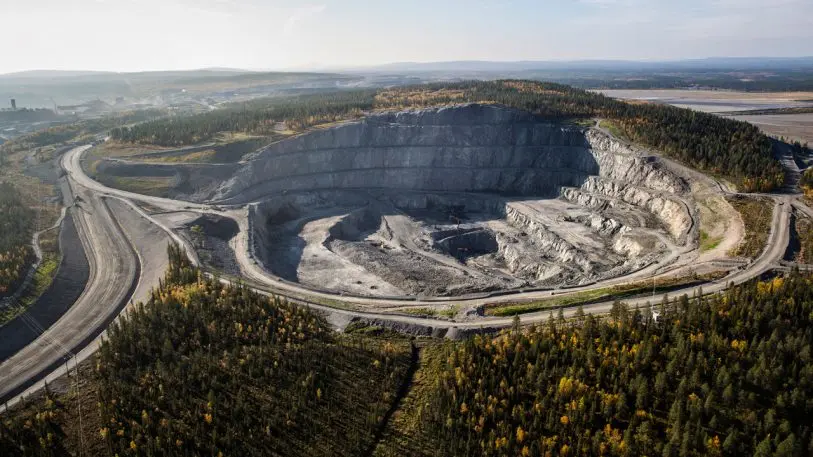
Over the course of the last decade, says Stefan Sydberg, vice deputy chairman of the Kiruna city council, Kiruna and LKAB determined which parts of the sprawling city would be affected by the eventual collapse into the mine. The whole center, Sydberg says, which includes the city hall, as well as many shops, schools, homes, and a fire station, fell within the affected zone.

It took years of debate–from around 2004 to 2011–Sydberg says, for the city to determine which structures to try to preserve and relocate, and which to destroy and rebuild. The sinking church, which was once voted the most beautiful building in Sweden, will be moved, but the old city hall will be left. Constructing a new city hall, Sydberg says, represented an opportunity for Kiruna to re-establish itself for the future.
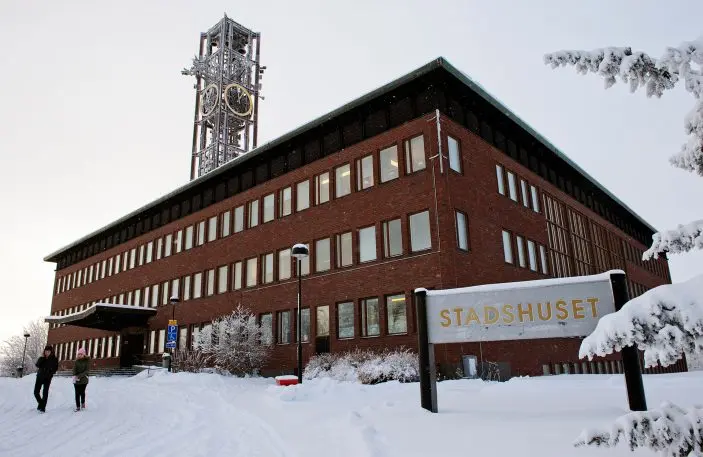
In 2012, the city issued an RFP for architects to design a new central building for Kiruna; the Danish design firm Henning Larsen won. The new town hall, called “The Crystal” is a cylindrical, modern structure that’s designed to act as a welcoming space in the relocated town center. Opened in November 2018, The Crystal houses the typical government offices around the perimeter of the building, but the middle is dedicated to telling the story of the city’s move. “The design includes the original bell tower, and recycles building materials from the 1958 town hall, slated for demolition during the move,” says Louis Becker, partner and design principal at Henning Larsen. “In this way, the new town hall represents not only a visual reimagining of the town, but a physical continuation of Kiruna’s history.”
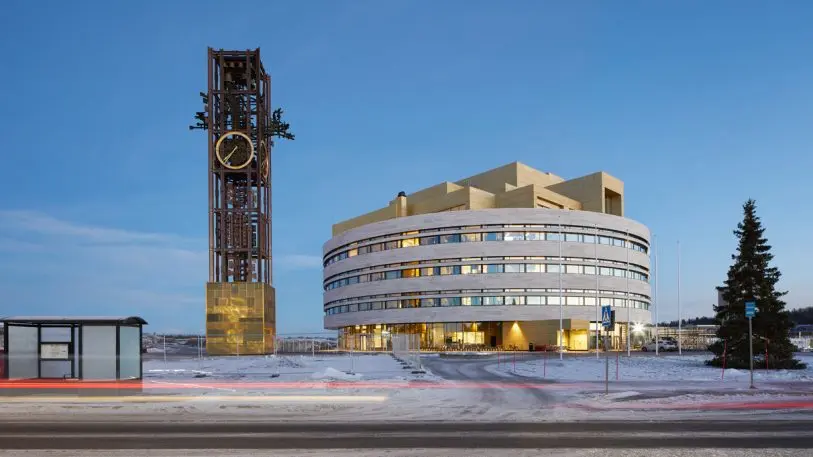
Now that the town hall is re-established, Sydberg says, the move is beginning to feel more real for the residents of Kiruna. But that does not mean it will be easy. Residents of the sinking zone, in particular, face a tough choice. Even with the funding from LKAB, apartment rents will be higher in the new town center. Sydberg says that the city is working to phase in the higher rents gradually, so that the approximately 6,000 people who will be displaced by the relocation could move to a new place and pay the same as they did previously, and see a slight increase in their rent every year. Some might instead choose to move into apartments outside the subsidence zone, which will stay the same cost or be cheaper, if they become available. “It’s a challenge,” Sydberg says. “We don’t want to lose any residents, but we also know that we can’t make people move to the new town center.”
Kiruna’s solution, which he hopes the new town hall will begin to help realize, is to make life in the new city center as appealing to residents as possible to offset the potentially higher costs, and the traumatic experience of having to abandon their old homes to the mine. “The first thing we did when planning the move was to listen to the people who would be affected,” Sydberg says. One of the main points of feedback they received was that many residents were concerned that moving into a valley would make them feel isolated. The new town is laid out so that “you will never be more than three blocks from nature,” Sydberg says. The new Kiruna radiates out from the city hall in a way that integrates the streets and amenities with nature, to make people feel more in touch with the environment around them.
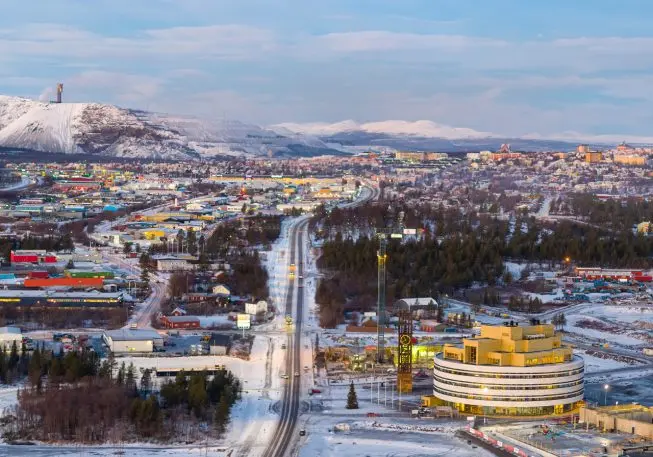
That integration with nature, Sydberg says, underlines Kiruna’s ultimate goal in relocating. “We have an obligation to take notice of climate change,” he says. Sydberg and the residents of Kiruna are well aware that the type of industry that is causing their town to collapse also causes more systematic damage to the environment. In designing the new city, Kiruna will build out new wind energy capacity, and harness excess heat from the ongoing mining activity to power the town. The aim is for the new city to be completely carbon-neutral.
What’s fascinating about the Kiruna relocation effort is that because the line between LKAB’s mining activity and the town’s demise is so clear, the mining company is obligated, under Swedish law, to pay for the move. “We have an advantage in that we are getting funds for relocation,” Sydberg says. He acknowledges that towns like Kivalina, a tiny place on the Alaskan peninsula contemplating relocation due to rising sea levels, should receive similar funding, but face a more uphill battle to secure it. After all, industries like mining and drilling causes sea level rise, but in many cases, it’s much harder to pin blame on one specific company. As more and more coastal towns or towns surrounded by drying-out deserts might have to consider relocation in the years to come, governments should begin to examine ways to hold companies with direct links to climate change accountable for paying damages, as they have done in Kiruna.
While Sydberg recognizes that Kiruna has many advantages in carrying out its relocation, he thinks that other vulnerable cities can still learn from them. The key he says, is for towns and cities to start the conversation with residents early. For Kiruna, one of the most difficult things has been balancing the desire to start afresh with deciding what to preserve and bring along. That, Sydberg says–along with collective thinking about what a fresh start in a new place might look like–needs to be a long and thoughtful conversation. In Kiruna, even as the move is underway, that conversation is still ongoing.
Recognize your brand’s excellence by applying to this year’s Brands That Matter Awards before the early-rate deadline, May 3.
